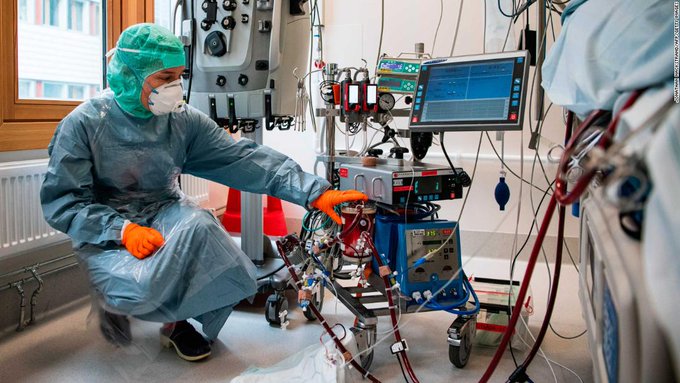
The coronavirus pandemic has not significantly slowed down in America, with the country reaching a death toll of more than 180,000 people, according to the Centers for Disease Control and Prevention.
Reports from the Washington Post that one of Trump’s newest pandemic advisors, Dr. Scott Atlas, was floating the idea of trying to slow the pandemic down using “herd immunity,” has led many to wonder what exactly that would entail and whether it could work.
What Is Herd Immunity?
Herd immunity is described by the Mayo Clinic as what occurs when “a large portion of a community (the herd) becomes immune to a disease, making the spread of disease from person to person unlikely.”
Herd immunity, the Mayo Clinic reported, can be achieved through either vaccinations or infections; its effectiveness depends on a number of factors, including how effective the vaccine is, how long antibodies from infection last, the size of the population attempting to reach herd immunity and level of the disease’s contagiousness.
According to the New York Times, “herd immunity is calculated from … R0,” a measure that describes an epidemic’s reproductive number or how many people one person can spread the virus to.
What Would It Take to Reach Herd Immunity?
Dr. Saad Omer from the director of Yale’s Institute for Global Health told the New York Times that in order for herd immunity to be achieved, the threshold of infection must be 43%.
World Health Organization Chief Scientist Dr. Soumya Swaminathan estimated that herd immunity would actually need to be much higher, with 60-70% infected in order for herd immunity to be achieved:
So, the SARS-CoV-2 virus is a highly transmissible virus. We think it needs at least 60 to 70% of the population to have immunity to really break the chain of transmission.
That 60-70% figure has been cited by the Mayo Clinic as well as the University of Texas’ MD Anderson Center.
According to the Mayo Clinic, several diseases have been successfully controlled via vaccine-induced herd immunity, including smallpox, polio, diphtheria and rubella. However, herd immunity achieved by infections could have very different consequences.
Could Herd Immunity Work?
According to most specialists analyzing herd immunity, the best option is to achieve herd immunity through vaccines because it would result in the least deaths. Swaminathan said that vaccination should be the only way people attempt to achieve herd immunity:
If you allow this to happen naturally, it will take a long time, of course, but more importantly, it’s going to do a lot of collateral damage. So even if 1% of people who get infected are ultimately going to die, then this can add up to a huge number of people, if we look at the global population. And that is why we believe it’s not a good idea to try to achieve herd immunity by just letting the infection run wild in the population and infect a lot of people and that we should talk about herd immunity in the context of a vaccine.
However, this method has drawbacks because just like with flu vaccines, a coronavirus vaccine might not be effective in 100% of people; and even if it was, anti-vaxxers could put that plan in jeopardy by refusing to get vaccinated. Even attempting to achieve herd immunity through infections is no guarantee, given that researchers are unsure of how long antibodies provide immunity for those infected with the coronavirus. As the Mayo Clinic reported, “it isn’t yet clear if infection with the COVID-19 virus makes a person immune to future infection.”
Moreover, just days ago, a 25-year-old Nevada man became identified one of the first Americans to be reinfected with coronavirus in a matter of months, as Science Alert reported.
Many researchers see attempting to achieve herd immunity through infections is not a matter of medical efficacy, but medical ethics. According to a May 19 article written by the National Institute of Health, “In the absence of a vaccine, building up SARS-CoV-2 herd immunity through natural infection is theoretically possible. However, there is no straightforward, ethical path to reach this goal, as the societal consequences of achieving it are devastating.”
Given the required illness rate of the coronavirus disease (60-70%), herd immunity achieved through infections would come at the cost of 200 million people being infected, the Mayo Clinic reported. In March, the World Health Organization reported that the disease’s global mortality rate was 3.4%. At this estimate, 6.8 million out of 200 million would die. Even if the mortality rate were lower, at 1%, two million could still die.
READ NEXT: COVID-19 Stimulus Checks 2: Nancy Pelosi Says Dems Are ‘Not Budging’
